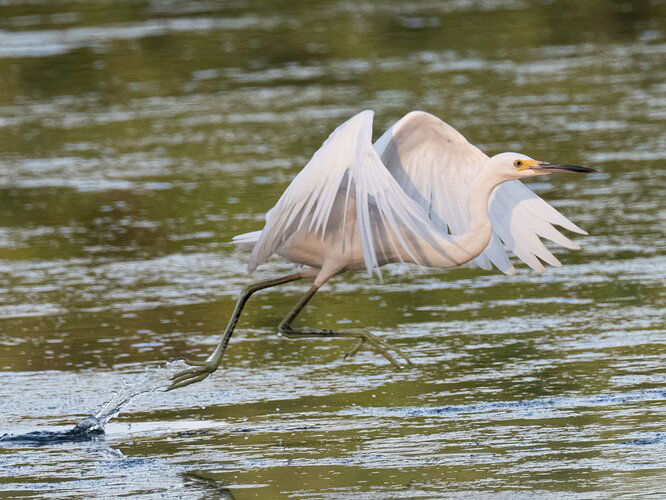What technical feedback would you like if any? Really trying to improve sharpness with birds in flight. This image, early morning light, Olympus OMD EM1 MarkII, Zuiko 300mm lens and 1.4x teleconverter, handheld. Bird about 50 yards away. Just learning to use Topaz DeNoise AI, but don’t want to overdo it. Welcome any tips.
Pertinent technical details or techniques:
(If backgrounds have been removed, etc. please be honest with your techniques to help others learn)
If you would like your image to be eligible for a feature on the NPN Instagram (@NaturePhotoNet), add the tag ‘ig’ and leave your Instagram username below.
Bill: Not a bad action shot. Not quite as crisp and sharp as it could be. You didn’t mention shutter speed in your description. That is critical for flight. As I also shoot with Olympus and teach flight, I could share my flight settings if desired.
For this image, it needs a clockwise rotation to get the water level.
Keith, Thank you for the feedback-very helpful. The shutter speed was 1/1250, maybe should have been higher. I completely missed the rotation. I would really appreciate any flight settings you could share. I am really trying to practice flight skills. Thanks, Bill
Hi Bill:
1/1250 is fine. Usually 1/1000 is sufficient for most birds in flight. Of course there are exceptions for really fast flyers.
Here’s some settings I developed for using the OM-D system:
C-AF, not C-AF +TR (tracking is not good unless the subject is against a completely smooth background like a blue sky)
AF Scanner (menu A1. AF/MF) - set to mode 2 - scanner runs only once
AF Area Pointer (menu A1. AF/MF) - set to ON2
Menu C1 - Release / Image Stabilizer - C-AF Release Priority - On
Menu C2 - Release Image Stabilizer - S-IS2 (panning only doesn’t try to correct vertical movement)
Menu C2 - Image Stabilization - FPS priority
Use Low Speed Continuous - Mechanical, or Low Speed continuous Silent for shutter. Don’t use High Speed in either mode
AF target: Either Single point, Single with 4 surrounding points (looks like a plus) or 3x3 grid.
Lens: Wide Open
Manual Exposure mode is by far the best for fight because it doesn’t allow the background to influence the meter during shooting. You have to become a student of the light and pay attention to any shifting in the light due to clouds, etc. but the only consistent way to get the right exposure on the bird is using Manual Exposure.
Keith,
Thanks so much for this information – very helpful. One last question, with the Olympus system and 300mm plus 1.4x teleconverter, I have been handholding for more flexibility. Do you ever use a tripod for birds in flight? If so, under what conditions?
Thanks again. Bill
Yes, I use a tripod but rarely with the Olympus system. I use it when the action is very repetitive. And example would be photographing sandhill crane’s leaving the pond at Bosque Del Apache in the morning. They’re all together. Then they leave hopefully in small groups or one at a time. The flight path is very consistent. So in that situation it’s easier to use a tripod and just follow the same path over and over.
A nice take-off shot, Bill. I like how you caught the splash of water behind the bird. Keith has given you excellent advice on action/flight shots. I would like to see more room in front of the bird. You asked for input on the crop, but didn’t say whether you’d already cropped it or not and the fixed focal length lens can limit your choices. In general, while the splash is really cool, I prefer to go with more room in front. You could try adding canvas there-it can work well with water.
Dennis, Great advice from you and Keith. I had cropped the original image, but didn’t much room in front of the bird and I wanted to capture the splash
. I went back and re-cropped and leveled as advised. I feel better about it now. thanks to both of you. Bill
I agree with everyone else’s comments on this shot, Bill, but nobody has mentioned that it is overexposed (lots of blown out highlights which loses feather details). That also means you could have used more shutter speed which would have helped bring out the details in both the bird and the splash. If I am anticipating action I always try to maintain at least 1/2000 even if I have to bump the ISO up. With ducks and little birds, my minimum is 1/2500.
Excellent. Thank you. Bill

